During the last two decades, researchers in Cereal Mycotoxin laboratory (Institute of Food Safety and Nutrition, JAAS) have been monitoring the natural occurrence of mycotoxin and accessing its risk in Eastern China. Rapid mycotoxin detection methods have been developed, the Fusarium graminearum species complex (FGSC) causing mycotoxin contamination was characterized and the molecular mechanisms regulating mycotoxin production in the fungus were also investigated.
Another research focus in this lab is the integrated management of cereal mycotoxin during wheat growth, harvesting and storage period.
Natural occurrence of mycotoxin in Eastern China
Fusarium head blight (FHB), caused by Fusarium graminearum species complex (FGSC), is a devastating disease of wheat in China. Disease epidemics not only lead to significant yield lose but also reduce grain quality by mycotoxin contamination in infected grains. Grains contaminated by many mycotoxins, such as deoxynivalenol (DON), nivalenol and zearalenone, which are unsafe for human consumption and animal feed and thus pose a serious threat to food safety.
They have developed HPLC-MS/MS and ELISA method to detect various mycotoxins in wheat and every year they collect wheat samples from different regions in Jiangsu and Anhui provinces to access the prevalence and concentrations and the possible risk of mycotoxin contaminations.
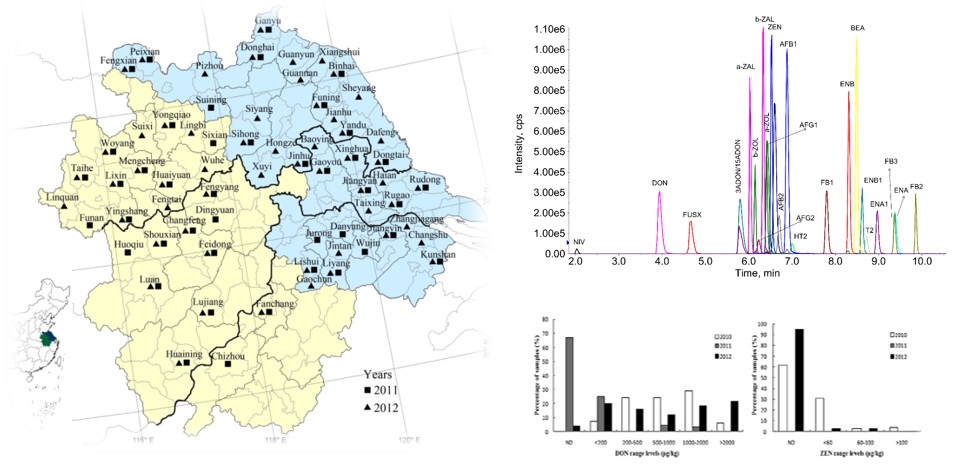
Molecular characterization of the FGSC in Eastern China
Members of the Fusarium graminearum species complex (FGSC) cause Fusarium head blight in small cereal grains all over the world. they have determined the species and trichothecene chemotype composition and population structure of FGSC in Jiangsu and Anhui provinces, areas where epidemics occur regularly for many years.
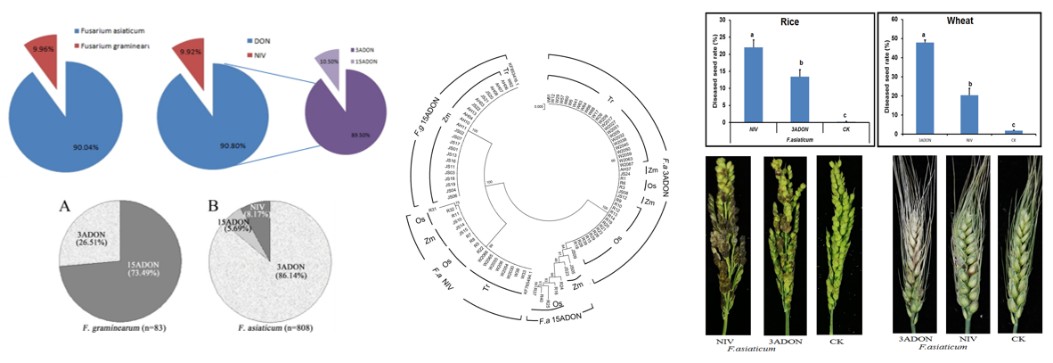
Molecular regulation mechanisms of mycotoxin biosynthesis
Targeted gene deletion or silencing technology is used to study the molecular regulation mechanisms of fungal mycotoxin biosynthesis, essential mycotoxin biosynthesis and other important fungal cellular activities have been identified. Effects of environmental factors on mycotoxin production have been investigated and their regulatory mechanisms have been determined.
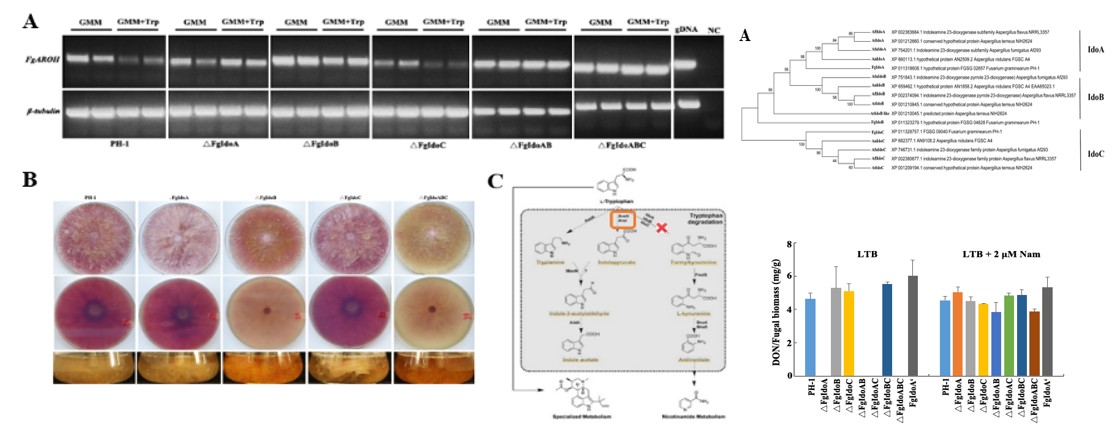
Integrated mycotoxin management
1) Bio-control of mycotoxin-producing Fusarium spp.
They have screened bacterial strains displaying antagonistic activity against Fusarium spp. from different samples. The inhibitory mechanisms of these bacterial strains were investigated and the chemical compounds or proteins which are effective against Fusarium spp. were also separated and identified.
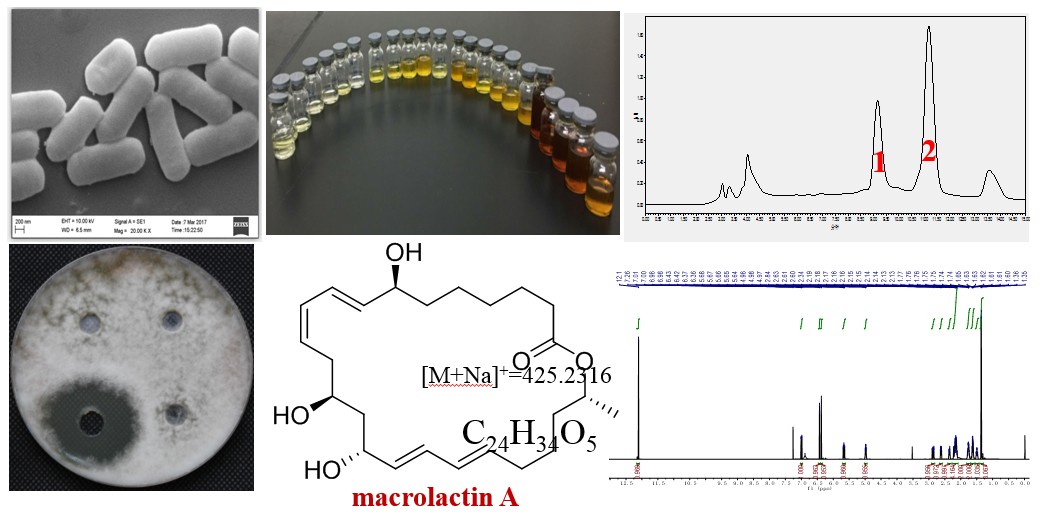
2) Detoxification of mycotoxin-contaminated grains
The group screened for detoxification methods for mycotoxins, new strategies for screening new biodegrading microorganisms were developed and several strains were isolated. The mechanisms of biodegradation were also investigated.
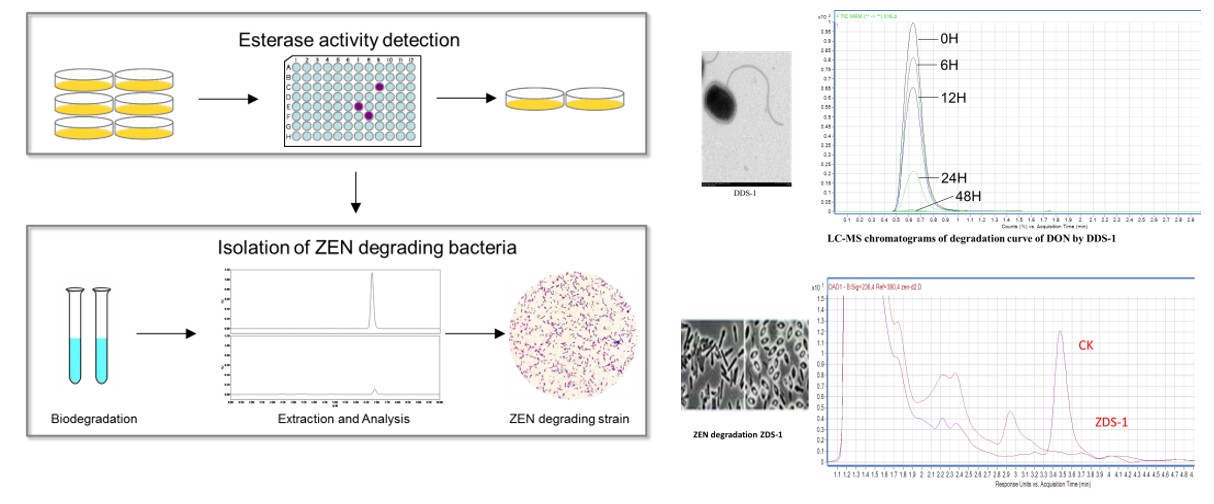
Large-scale production and purification of Fusarium mycotoxins
Due to the high prices of mycotoxins that hampered biodegradation research, the production and purification procedures for Fusarium mycotoxins were established based on column chromatography and HSCCC techniques.
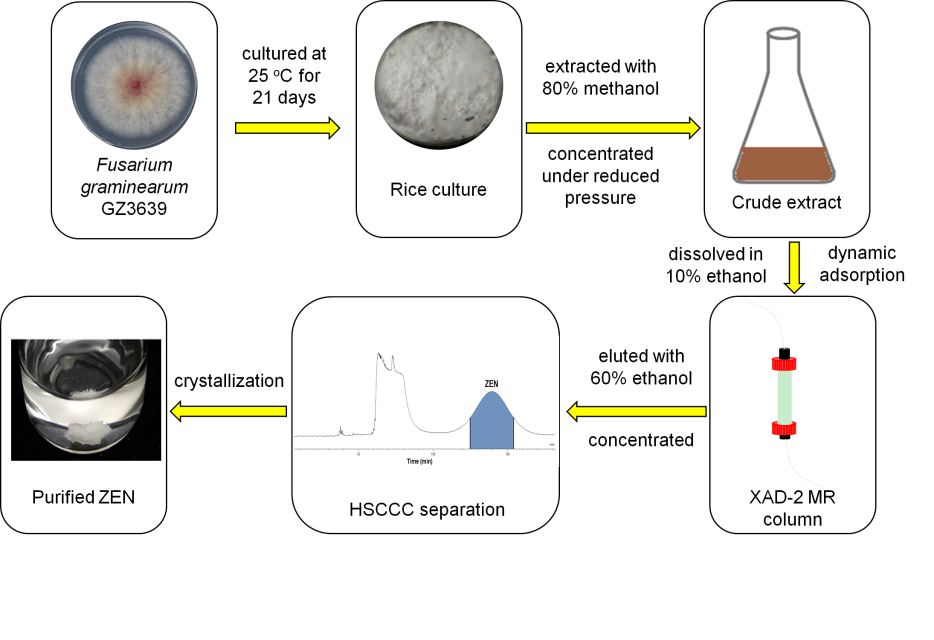
3) Host-induced gene silencing (HIGS) of crucial mycotoxin biosynthesis or regulation genes
They aimed to silence crucial mycotoxin biosynthesis or regulation genes to control the disease and mycotoxin contamination through HIGS.
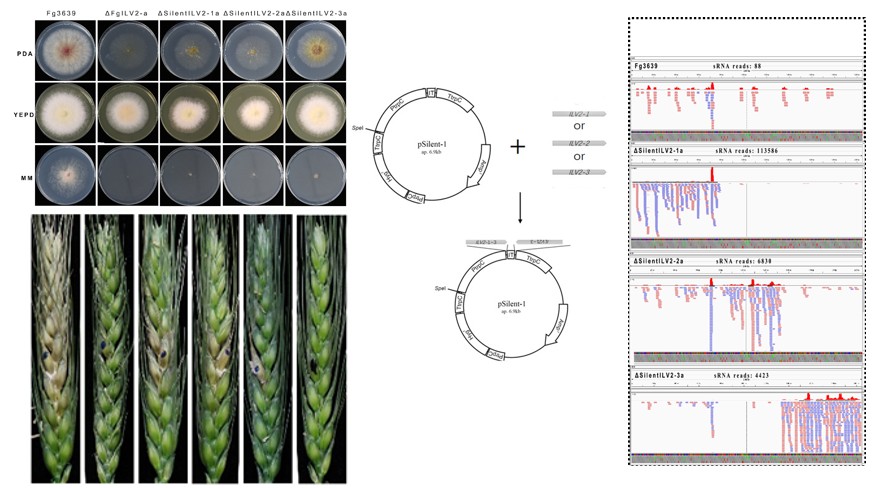
Recent representative Publications:
1)Gang Wang, Yanxia Wang, Fang Ji, Limei Xu, Mingzheng Yu, Jianrong Shi, Jianhong Xu. (2019).Degradation of Deoxynivalenol and its Derivatives by Devosia insulae A16, Food chemistry, 276:436-43.
2)Jianbo Qiu, Mingzheng Yu, Qian Yin, Jianhong Xu, Jianhong Shi (2018). Molecular characterization, fitness, and mycotoxin production of Fusarium asiaticum strains resistant to fludioxonil. Plant disease, 2018,102:1759-1765.
3)Fei.Dong, Shufang.Wang, Mingzhen.Yu, Yue.Sun, Jianhong Xu, Jianhong Shi. Natural occurrence of deoxynivalenol and deoxynivalenol-3-glucoside in various wheat cultivars grown in Jiangsu province, China. World Mycotoxin Journal,2017,10(3):285-293.
4)Peng Deng, Adam Foxfire, Jianhong Xu, Sonya M. Baird, Jiayuan Jia, Keren H.Delgado, Ronald Shin, Leif Smith, Shi-En Lu. The siderophore product ornibactin is required for the bactericidal activity of Burkholderia contaminans MS14. Applied and Environmental Microbiology, 2017, 83(8):00051-17.
5)Wang, G., Yu, M., Dong, F., Shi, J., & Xu, J. (2017). Esterase activity inspired selection and characterization of zearalenone degrading bacteria Bacillus pumilus ES-21. Food Control, 77, 57-64.
6)Ji, F., Mokoena, M. P., Zhao, H., Olaniran, A. O., & Shi, J. (2017). Development of an immunochromatographic strip test for the rapid detection of zearalenone in wheat from Jiangsu province, China. PloS one, 12(5), e0175282.
7)Liu, X., Han, Q., Wang, J., Wang, X., Xu, J., & Shi, J. (2016). Two FgLEU2 Genes with Different Roles in Leucine Biosynthesis and Infection-Related Morphogenesis in Fusarium graminearum. PloS one, 11(11), e0165927.
8)Qiu, J. B., Sun, J. T., Yu, M. Z., Xu, J. H., & Shi, J. (2016). Temporal dynamics, population characterization and mycotoxins accumulation of Fusarium graminearum in Eastern China. Scientific reports, 6.
9)Xu, J., Wang, H., Zhu, Z., Ji, F., Yin, X., Hong, Q., & Shi, J. (2016). Isolation and characterization of Bacillus amyloliquefaciens ZDS-1: Exploring the degradation of Zearalenone by Bacillus spp. Food Control, 68, 244-250.
10)He, X., Lillemo, M., Shi, J., Wu, J., Bjørnstad, Å., Belova, T., ... & Singh, P. (2016). QTL Characterization of Fusarium Head Blight Resistance in CIMMYT Bread Wheat Line Soru# 1. PloS one, 11(6), e0158052.
11)Dong, F., Qiu, J., Xu, J., Yu, M., Wang, S., Sun, Y., ... & Shi, J. (2016). Effect of environmental factors on Fusarium population and associated trichothecenes in wheat grain grown in Jiangsu province, China. International journal of food microbiology, 230, 58-63.
12)Qiu, J., Dong, F., Yu, M., Xu, J., & Shi, J. (2016). Effect of preceding crop on Fusarium species and mycotoxin contamination of wheat grains. Journal of the science of food and agriculture, 96(13), 4536-4541.
13)Yin, X., Zhu, Z., Zhou, Y., Ji, F., Yao, Z., Shi, J., & Xu, J. (2016). Complete genome sequence of deoxynivalenol-degrading bacterium Devosia sp. strain A16. Journal of biotechnology, 218, 21-22.
14)Ji, F., Wu, J., Zhao, H., Xu, J., & Shi, J. (2015). Relationship of deoxynivalenol content in grain, chaff, and straw with fusarium head blight severity in wheat varieties with various levels of resistance. Toxins, 7(3), 728-742.
15)Liu, X., Han, Q., Xu, J., Wang, J., & Shi, J. (2015). Acetohydroxyacid synthase FgIlv2 and FgIlv6 are involved in BCAA biosynthesis, mycelial and conidial morphogenesis, and full virulence in Fusarium graminearum. Scientific reports, 5 :16315
16)Ji,F., Xu,J., Liu,X., Yin,X. & Shi,J. (2014) Natural occurrence of deoxynivalenol and zearalenone in wheat from Jiangsu province, China. Food Chem, 157, 393-397.
Ji,F., Xu,J., Liu,X., Yin,X. & Shi,J. (2014) Natural occurrence of deoxynivalenol and zearalenone in wheat from Jiangsu province, China. Food Chem, 157, 393-397.
17)Wu,J., Yu,M., Xu,J., Du,J., Ji,F., Dong,F., Li,X. & Shi,J. (2014) Impact of Transgenic Wheat with wheat yellow mosaic virus Resistance on Microbial Community Diversity and Enzyme Activity in Rhizosphere Soil. PLoS One, 9, e98394.
18)Liu,X., Wang,J., Xu,J. & Shi,J. (2014) FgIlv5 is required for branched-chain amino acid biosynthesis and full virulence in Fusarium graminearum. Microbiology, 160, 692-702.
19)Liu,X., Xu,J., Wang,J., Ji,F., Yin,X. & Shi,J. (2014) Involvement of threonine deaminase FgIlv1 in isoleucine biosynthesis and full virulence in Fusarium graminearum. Curr.Genet
20)Qiu, J. & Shi, J. (2014) Genetic relationships, Carbendazim sensitivity and mycotoxin production of the fusarium graminearum populations from maize, wheat and rice in eastern china. Toxins (Basel), 6, 2291-2309


